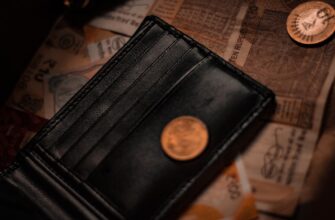- Why Private Key Anonymity Is Non-Negotiable
- Step-by-Step: Securing Your Private Key Anonymously
- Step 1: Generate Keys Offline in Isolation
- Step 2: Anonymize Storage Mediums
- Step 3: Implement Ghost Storage Protocol
- Step 4: Maintain Operational Security
- Critical Mistakes That Destroy Anonymity
- FAQ: Private Key Anonymity Explained
- Final Lockdown Protocol
Why Private Key Anonymity Is Non-Negotiable
Your cryptocurrency private key is the ultimate gateway to your digital assets. If exposed, hackers can drain your funds instantly. Worse, if your key is linked to your identity, you become a target for physical theft, surveillance, or regulatory scrutiny. Anonymizing your private key security isn’t just smart—it’s critical for true financial sovereignty. This guide reveals how to lock down your keys without leaving digital breadcrumbs.
Step-by-Step: Securing Your Private Key Anonymously
Step 1: Generate Keys Offline in Isolation
- Use a clean device: Wipe an old laptop or use a live Linux USB (e.g., Tails OS) that never touched the internet.
- Download software offline: Transfer open-source tools like Electrum or BitKey via USB from a trusted public computer.
- Disable all connectivity: Remove Wi-Fi cards, disable Bluetooth, and run in airplane mode.
- Generate keys: Create keys using the software’s offline mode. Verify checksums of downloaded files beforehand.
Step 2: Anonymize Storage Mediums
- Paper Wallets: Print keys offline using a non-networked printer. Use tamper-evident envelopes.
- Metal Backups: Engrave keys onto titanium plates (e.g., Cryptosteel) for fire/water resistance.
- Encrypted USBs: Use VeraCrypt to create hidden volumes with 25+ character passphrases. Never label directly.
Step 3: Implement Ghost Storage Protocol
- Fragment your key: Split into 3-5 shards using Shamir’s Secret Sharing (SSS).
- Geodiversify: Store shards in anonymous locations: bank lockbox under pseudonym, buried waterproof case, trusted contact (with no crypto knowledge).
- Zero digital traces: Pay storage fees with cash or privacy coins like Monero. Use gloves when handling materials.
Step 4: Maintain Operational Security
- Never type full keys online—use hardware wallets for transactions
- Access funds via Tor or VPN with kill switches
- Regularly verify physical backups without exposing them
Critical Mistakes That Destroy Anonymity
- ❌ Using cloud storage or email for backups (metadata leaks)
- ❌ Storing keys on mobile devices (app permissions = exposure)
- ❌ Reusing addresses (creates transaction trails)
- ❌ Sharing “secure” photos of keys (EXIF data reveals location)
FAQ: Private Key Anonymity Explained
Q: Can hardware wallets guarantee anonymity?
A: Only if purchased anonymously with cash and never connected to KYC exchanges. Most ship with trackable serial numbers.
Q: Is multisig more anonymous?
A: Yes, but complexity increases. Use 3-of-5 setups with geographically dispersed signers and anonymous devices.
Q: How often should I rotate keys?
A: Only if you suspect compromise. Properly anonymized keys shouldn’t need rotation.
Q: Can biometrics replace passphrases?
A: Never—biometrics create irreversible identity links. Use diceware passphrases instead.
Q: What if I need to recover keys?
A: Reconstruct shards in isolation using your SSS scheme. Never seek third-party help.
Final Lockdown Protocol
True anonymity requires treating your private key like nuclear codes. By air-gapping generation, fragmenting storage, and eliminating digital footprints, you create an untraceable security fortress. Remember: In crypto, opacity isn’t secrecy—it’s survival. Implement these steps meticulously, and your keys will remain ghosted from adversaries forever.








